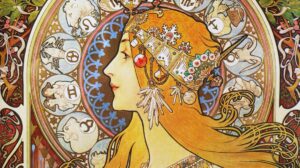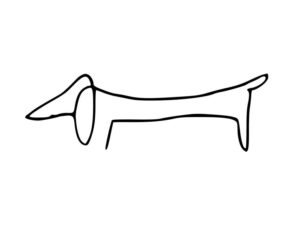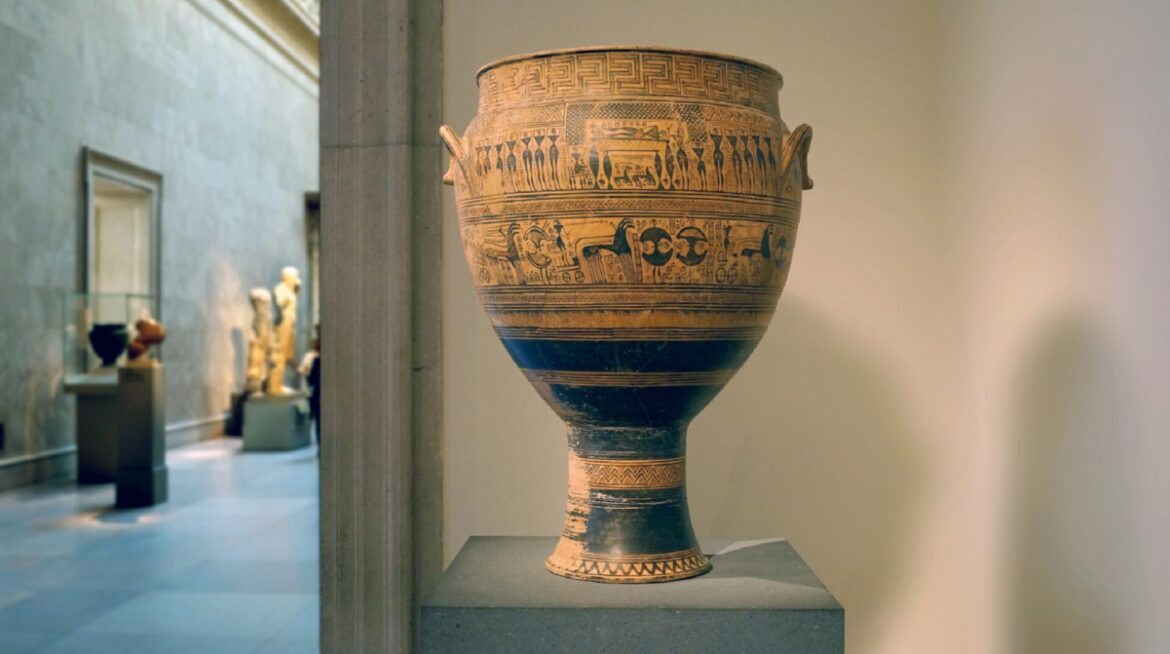The expressiveness of a simple line has fascinated artists throughout centuries and never failed to spark controversy over its ultimate mastery. The virtuosity as a draftsman is often recounted (cited) as tantamount proof of an artist’s skill in captivating reality, while the execution of the line is obsessed over and analyzed to its most minute detail: its contours, flowing curvature, sinuousness.
Lines may be described as elegant and graceful or infused with a powerfully rhythmic and whip-like force, as secure strokes or shivering meanderings. There are squishy lines, tottering lines, some lines that are supposedly “full of elegant intelligence” and others quivering and probing, “mirroring the artist’s agonizing inner turmoil.”
Suffice it to say that when a line finds its way into a medium, drawn by the hand of an artist, it seems to evoke a somewhat personal and direct interpretation of the artist’s self-expression.
As a mere concept, a line can be described as an “identifiable path created by a point moving in space,“ yet its true significance reaches beyond mere artistry and deep into our cultural beginnings.
A line is a primal form of articulate expression. One can splash paint on the wall of a cave and yet leave no meaning behind; it is the line that formed the first symbols known to mankind.
The geometric lines of the Mediterranean Iron Age – when Homer’s Iliad was first turned from oral narrative into scripture, forming Western culture’s foundational codices of moral conduct and societal stratification – are highly stylized, patterned, and orderly.
The famous Dipylon krater (c. 750 -735 B.C., The Metropolitan Museum of Art — featured above) found near the Dipylon gate in Athens bears witness to an age that saw man tackling formerly unfathomable concepts of mortality through the artistic depiction of ritualized burial parallel to its codification of societal order.
There was strength and power in this newfound cultural harnessing of a formerly chaotic and unorganized world shrouded in myth and superstition.

Therefore one might theorize that every age and every civilization has its own characteristic line. The Byzantine line was a clear contour devoid of personal whim, yet charged with the sophistication of style and spirituality of expression.
One also thinks of the characteristic Art Nouveau line – long, sinuous, organic, with its undulating asymmetrical line, often taking the form of flower stalks and buds, a precursor of modernism – which emphasized function over form and the elimination of superfluous ornament and brought Victorian excesses to a dramatic fin-de-siècle crescendo.
 With modernity, the distinguishing ornamental characteristic of the last century culminated in a countless array of new lines – from the geometric abstraction of Piet Mondrian to post-war broad, sweeping, and luscious strokes of the American expressionists and Cy Twombly’s enigmatic glyphs, to 1980s street artists who furiously crossed lines and evaporating puffs from a spray can.
With modernity, the distinguishing ornamental characteristic of the last century culminated in a countless array of new lines – from the geometric abstraction of Piet Mondrian to post-war broad, sweeping, and luscious strokes of the American expressionists and Cy Twombly’s enigmatic glyphs, to 1980s street artists who furiously crossed lines and evaporating puffs from a spray can.

This supposed function as a cultural and psychological gauge is not the only power the drawn line holds; its more immediate fascination over our perception is the question of what can be defined by a simple line.
Can the essence of an entire entity be circumference in the stroke of a single line, like Picasso with his beloved Dachshund “Lump”? (At left, via anOthermag.com)
As Cuban artist Ruben Rodriguez Martinez puts it: The first line is easy; it is the second one that is hard. The second one defines the space, forcing us to really see and define the meaning of what it is that we seek to create.
It is here where the viewer relates to the human condition and its permanent struggle against loneliness – a line contouring a tenderly loved pet and the deep vulnerability in exposing the desire for human connection with the statement of a simple line.
A line, enigmatic in its simplicity and its high level of suggestion, evokes deep ontological questions in the viewer on how we define the space in between those lines and what it is that is being outlined by our culture.

